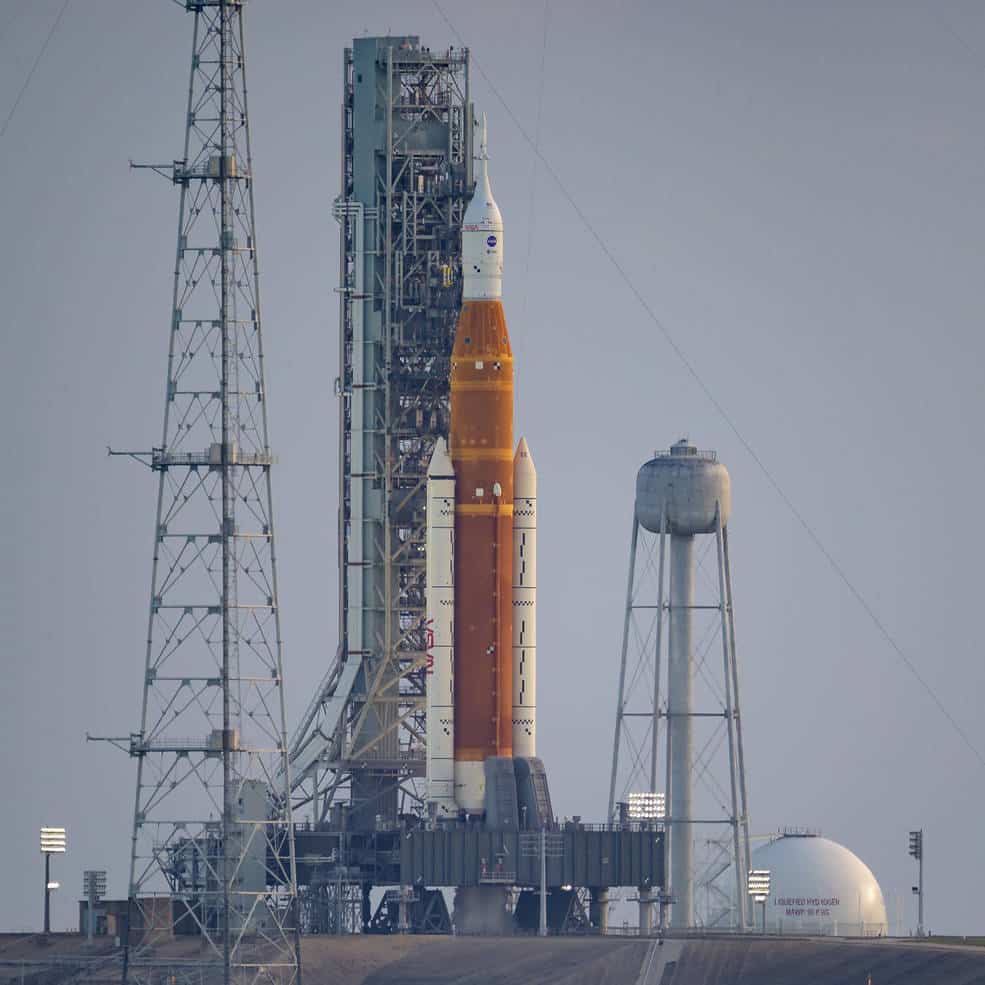Aerospace
The Artemis 1 was successfully launched by NASA. from the Cape Canaveral, Florida-based Kennedy Space Center Live Updates
The Artemis 1 was successfully launched by NASA. from the Cape Canaveral

Latest updates : Orion’s solar arrays have completed their deployment. The arrays are drawing power, and early data suggests good performance. The next milestone will be a perigee raise maneuver targeted for approximately 2:41 a.m. EST to raise Orion’s orbit in preparation for the critical trans-lunar injection that will send Orion to the Moon.
Latest updates: The Space Launch System core stage main engine cutoff is complete, and the core stage has separated from the interim cryogenic propulsion stage and Orion spacecraft. The next milestone is the deployment of Orion’s solar arrays, scheduled to begin approximately 18 minutes after launch.
Updates : The service module fairing and launch abort system have successfully separated from the Orion spacecraft. The SLS core stage will continue to fire until about 8 minutes after launch.
From the NASA. Kennedy Space Center in Cape Canaveral, Florida, the Artemis program of NASA has taken off. There are no crew members on the vehicle. On November 16, at 12:17 IST, the SLS rocket blasted off from the Kennedy Space Center. A little while later, Orion and the top stage were cut off and separated from the rocket’s core stage.
All four of Orion's solar arrays have deployed. pic.twitter.com/4DtzRO3Bl3
— Orion Spacecraft (@NASA_Orion) November 16, 2022
The mission management team has polled “go” to proceed with the terminal count sequence. The launch director is also “go” and teams have set a new target launch time of 1:47 a.m. EST and the countdown clock resumed at 1:37 a.m.
With approval from the launch director and managers, a series of countdown milestones for the Artemis I terminal count to launch will be initiated by the Ground Launch Sequencer at T-10 minutes:
The first mission in NASA’s Artemis program, designated officially as Artemis I, is an unmanned Moon orbiting mission that marks the debut of the Space Launch System (SLS) rocket and the entire Orion spacecraft. On November 16, 2022,
EST (0604 UTC). During #Artemis I, Orion will lift off aboard the Space Launch System (SLS) rocket, and travel 280,000 miles (450,000 km) from Earth and 40,000 miles (64,000 km) beyond the far side of the Moon, carrying science and technology payloads to expand our understanding of lunar science, technology developments, and deep space radiation.
At the Kennedy Space Center in Cape Canaveral, Florida, Artemis I will be the first integrated flight test of NASA’s deep space exploration system, which includes the Orion spacecraft, Space Launch System (SLS) rocket, and ground equipment. Artemis I, the first of a series of more difficult missions, will be an unmanned flight that will lay the groundwork for human deep space exploration and shows our willingness and capacity to take human civilization to the Moon and beyond. The unmanned Orion spacecraft will launch on the most potent rocket in the world and, over the course of about a three-week mission, will travel thousands of miles beyond the Moon, farther than any spacecraft built for humans has ever flown.

Aerospace
When Ratan Tata was denied entry to the airfield at the Aero India show, he waited

During our visit to Aero India 2019, we had the unexpected opportunity to see Ratan Tata at the event, which was a thrilling moment for us. However, there was a surprising hiccup when the security staff didn’t allow him to enter due to a lack of a security pass.
Despite this, he remained calm and patiently waited for about 20 minutes until a member of the Tata team brought him the required pass, after which he calmly proceeded inside. It was a humbling sight, showcasing his composed demeanor even in such situations.
Ratan Tata ji is not only a renowned industrialist but also a trained pilot, holding a pilot’s license. In 2007, he became the first Indian civilian to fly the F-16 Falcon during the Aero India show in Bangalore—a proud moment for the nation.
His passion for aviation extended beyond flying, as he played a key role in shaping India’s aerospace industry. Under his leadership, Tata ventured into manufacturing and maintaining aerospace components while upholding its legacy of quality. Notably, Tata’s collaboration with Airbus to develop and manufacture the C295 aircraft is a testament to its growing influence in the sector.
-

 Aviation2 months ago
Aviation2 months agoMicrosoft Flight Simulator Raises $3 Million to Bring Back the An-225 Mriya
-

 Airlines2 months ago
Airlines2 months agoQatar Citizens Can Travel to the United States Without a Visa
-

 Aviation2 months ago
Aviation2 months agoQatar Airways bans these new Electronic Devices on plane
-

 Airlines2 months ago
Airlines2 months agoJapan Airlines Rolls Out Free Domestic Flights to International Passengers
-

 Defence2 months ago
Defence2 months agoWhich Country Has the Largest Fleet of Fighter Aircraft?
-

 Airport2 months ago
Airport2 months agoWestern Sydney Airport Welcomes Its First Plane After 6 Years of construction
-

 Travel2 months ago
Travel2 months agoQatar Airways Launches Four Additional Flights from Amsterdam
-

 Aviation2 months ago
Aviation2 months agoDid you know ? Once Boeing 747 carried 1088 passenger in 1991








